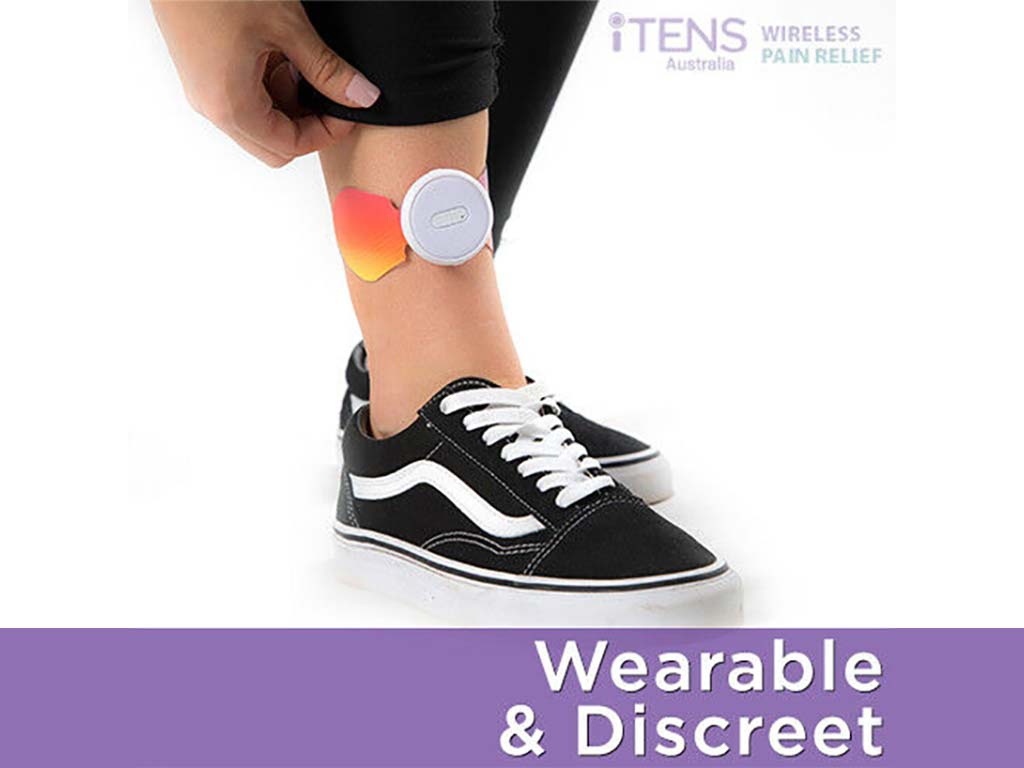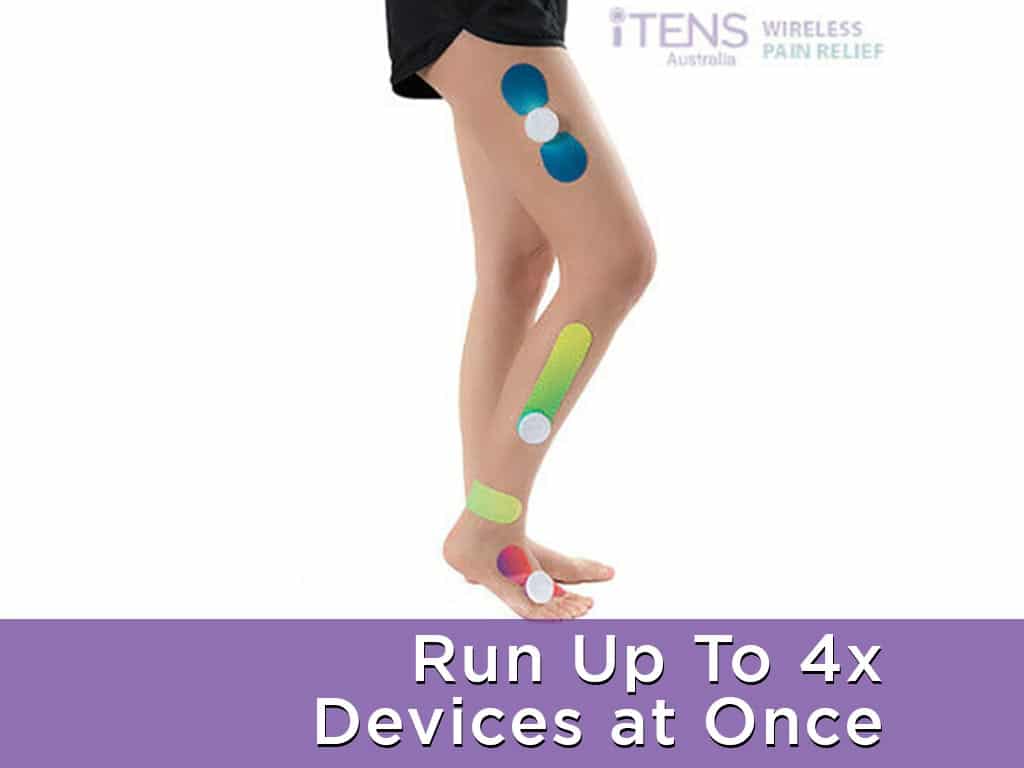
Transcutaneous Electrical Nerve Stimulation (TENS) is a therapy that uses a small, battery-operated device to deliver electrical current to the body through electrode pads. Accordingly, this electrical stimulation works based on various mechanisms. This includes the pain gate mechanism, the release of endorphins, and the promotion of blood circulation. Moreover, TENS may have potential risks, but they are minimal and can be mitigated. Examples of these are skin irritation and muscle twitching.
Pain management is a common concern for many individuals. Whether it be chronic pain, acute pain or other types of pain. While there are various methods, such as pain medication, TENS has emerged as a popular method of pain relief. It is particularly beneficial for both healthcare professionals and individuals seeking relief. The following section will present TENS, including how it works and the potential risks associated with TENS.
What Is Transcutaneous Electrical Nerve Stimulation?
One popular type of therapy is the Transcutaneous Electrical Nerve Stimulation. It uses a portable device to stream electrical impulses to the sensory nerves through electrode patches. Accordingly, this approach provides a form of pain relief for various painful conditions. This includes musculoskeletal pain, neuropathic pain, labour pain, period pains, primary dysmenorrhea, postoperative pain, phantom limb pain and other pain conditions.
Pain clinics and medical professionals commonly use TENS. However, the advancement in technology gave rise to the production of personal units, which can provide additional convenience. Subsequently, there are two main types of TENS: wired and wireless. Wired or traditional units use lead cables to connect the electrodes to the device. Meanwhile, wireless TENS removes restrictions by incorporating Bluetooth, providing better mobility.
Furthermore, people can use the device manually or with the use of a smartphone via Bluetooth technology. Most TENS also offer adjustable settings. This allows individuals to customise the pulse rate, intensity, and pulse duration. Also, some TENS extend pre-set programs. This enables people to choose and have a more direct approach to pain control.
A Brief History
- The concept of using electric current as a treatment for pain was first explored in the 1960s.
- In the early years of TENS, researchers began experimenting with the application of electrical pulses. The initial focus was on understanding how this can affect the nervous system and alter the perception of ailment.
- The research and clinical trials on TENS laid the foundation for its widespread use as a treatment of pain. TENS has gained acceptance within the medical community as a non-pharmacological approach to alleviating discomfort.
- As technology advances, the development of portable devices has made them more accessible for individuals to use in various settings.

How Does Transcutaneous Electrical Nerve Stimulation Work?
Transcutaneous Electrical Nerve Stimulation works through several physiological mechanisms. When a person undergoes TENS therapy, the electrical impulses can trigger the production and release of endorphins. These are the natural chemicals of the body that act as painkillers. Hence, these endorphins can help reduce the perception of pain in people and create a sense of well-being.
Another method is using the pain gate mechanism. According to this Gate Control Theory of Pain, stimulating the nerve fibres that carry non-painful sensations to the brain can essentially close the gate to the transmission of pain signals. This effectively provides a reduction in pain intensity. Hence, TENS may help to interfere with the pain messages travelling along the nerve pathways, leading to decreased perception of discomfort.
Accordingly, TENS therapy may also contribute to the improvement of blood circulation in the treatment region. The electrical impulses can cause the blood vessels to dilate, increasing blood flow. As a result of the improved blood flow, it can help deliver oxygen and essential nutrients to tissues. This may promote tissue healing and reduce discomfort associated with certain types of medical conditions.
Main Benefits of the Treatment
TENS offers several key benefits as a treatment modality. One of the primary advantages of the therapy is its non-invasive and drug-free approach. It does not require invasive procedures or the need to intake oral medications. Another benefit of TENS is its portability. The availability of compact and lightweight devices enables people to use the treatment at home or on the go.
Additionally, TENS is highly customisable. Users can tailor the parameters of TENS treatment, such as the intensity, frequency, and duration. Also, TENS is a cost-effective option. It eliminates the ongoing cost of medications or the frequent visits to clinics or healthcare providers.

Potential Risks of Transcutaneous Electrical Nerve Stimulation
Transcutaneous Electrical Nerve Stimulation is safe, but there are potential risks associated with this therapy that individuals should be aware of. One adverse effect is skin irritation or allergic reaction at the electrode placement site. The excessive use of TENS or cheap adhesives may lead to redness, itching, or discomfort in the treatment area. To mitigate this, use good quality products and make sure that the skin is clean and dry before placing the pads.
Another possible risk is muscle twitching. Some individuals may experience involuntary muscle contractions in response to the electrical pulses. This may occur if the intensity of the electrical stimulation is too high or the electrodes are placed inappropriately. Hence, it is crucial to adjust the settings to a comfortable level.
Moreover, there is a risk of interference with implanted medical devices. The electrical signals from TENS can potentially interfere with the function of implanted devices, leading to complications. Furthermore, certain medical conditions, such as epilepsy, may be at a higher risk of experiencing adverse effects from TENS therapy. The electrical currents may trigger seizures.
Safety Guidelines to Follow
Before starting TENS therapy, individuals should consult with a healthcare professional. This consultation is essential to determine if TENS is safe and appropriate for their specific health status. Also, it is important to know and follow the proper pad placement. This promotes effective treatment and eliminates the risks of skin irritation or discomfort.
The duration of treatment should last between 15 to 30 minutes. For longer sessions, it is crucial to have breaks before continuing the therapy. Moreover, do not use TENS while driving, sleeping, or operating heavy machinery. The electrical signals can cause distraction, leading to accidents.
Conclusion
In summary, Transcutaneous Electrical Nerve Stimulation is a valuable treatment option for managing pain conditions. It is a therapy that uses a portable device to deliver electrical currents to the nerves in the body through electrode pads. Accordingly, these electrical pulses work by blocking the pain signals, prompting the release of endorphins, and improving blood circulation. As a result, it helps to address conditions like musculoskeletal pain, neuropathic pain, labour pain, and postoperative pain.
Furthermore, TENS offers numerous benefits. It is non-invasive, drug-free, portable, customisable, and cost-effective. Nevertheless, it is crucial for individuals to be aware of the potential risks of TENS. This may involve skin irritations, muscle twitching, interference with implanted devices, and effects on underlying medical conditions. Lastly, people should adhere to the safety guidelines for an effective TENS therapy session. TENS machines are available in numerous stores, including the online retailer iTENS Australia.




















